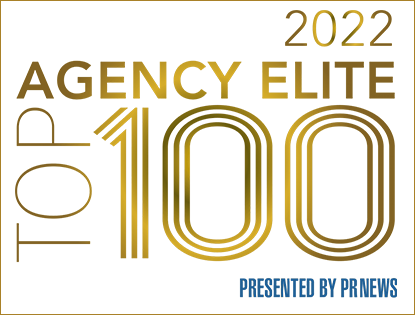BRG Communications Takes Home Silver Anvil for Best Boutique Agency
ALEXANDRIA, Va., June 2, 2022 – BRG Communications (BRG) was recently recognized by the Public Relations Society of America (PRSA) with a Silver Anvil for Best Boutique...
Posts by:

ALEXANDRIA, Va., June 2, 2022 – BRG Communications (BRG) was recently recognized by the Public Relations Society of America (PRSA) with a Silver Anvil for Best Boutique...

BRG Communications (BRG) announced today its certification from Great Place to Work ®, a nationally recognized authority on America’s top workplaces. Leveraging...

BRG Communications (BRG) is marking its 20th anniversary with the introduction of the BRG Better Living Scholarship Fund to support and inspire the next generation of...

We are very proud of our founder and CEO, Jane Barwis for being recognized as a top woman in PR by PRNEWS. The PRNEWS Top Women in PR Awards, highlights supportive,...

As we near our 20th anniversary, team BRG is honored to be recognized amongst so many distinguished communications firms. We thank our wonderful clients that make homes...
As we are all becoming more familiar with quarantined life and adjusting to working and schooling from home, there are still a great number of people within our communities who need our support in this new normal.
Social distancing and pressures to stay at home have already impacted businesses and communities nationally and globally. A recent Gallup survey shows that 72% of U.S. adults now say they are avoiding public places like stores and restaurants. And, an even larger percentage of Americans are avoiding events with large crowds (92%) and are staying away from air travel or mass transit (87%).
While this change in activity greatly limits foot traffic and in-person engagement, companies can amplify their employee, customer or member communication digitally to sustain and build relationships through this turbulent time.
Here are four ways that your business can engage with target audiences virtually:
1. Conduct Remote Media Interviews
Whether your messages are related to COVID-19 or another topic, national, local and trade media are continuing to cover news and reporters want to hear from experts.
From phone interviews to conducting taped or live, video interviews, there are a multitude of options for you to speak with media, reinforcing your messaging and expanding your reach with audiences.
In 2018, more than 1 million new people joined social media every day, with at least 50 social media channels ready to engage these new users.
While it may seem like these numbers signal endless opportunities for a company to connect with its audience, that might not be the reality. Brands can’t be everywhere at once, and shouldn’t be.
With no end in sight for the platforms to leverage, how does a business decide which social channel to use? It’s critical to analyze social channels to determine if your brand needs to be “on trend” with the latest channel or if there’s a better place for your business’s voice to resonate.
We always found our analysis with data and metrics that are available to make an informed decision:
When you’re researching social media channels, having users is not the same thing as having people active on said channel.
Overall, research tells us that Facebook still has the most active users – 2.27 billion of them monthly. Instagram is pretty close with 1 billion monthly active users. Whereas, Pinterest has 250 million monthly active users.
As you’re researching new platforms to use, find out the number of active users to better understand whether people are truly engaging on the platform.
Common demographic data for social media usage gives us insight into gender, location, age group, income and education. Additionally, new Hootsuite research touts that 52% of brand discovery happens in public social feeds. Whereas data from GlobalWebIndex shows that 63% of people say messaging apps are where they feel most comfortable sharing and talking about content. It’s important to research these demographics and engagement to determine which channel or channels – public or private – align with your target audience.
One other piece of audience data that is right at your fingertips is your website data. Review your website traffic to see which channel(s) already drive traffic to your site and be sure to take that into your social media prioritization.
Our marketing activities are only worth as much as what we can show, which is why leveraging channels that give you metrics to demonstrate success and opportunities is key.
Whether it’s impressions, clicks, likes – even if it’s available to the public – video views or new followers, social media channels that are measurable give insight into how the content performs.
Social media gives us the opportunity to have meaningful conversations with your audience at scale. The trick is finding the right channel for your messages and audience. We can help.

Donate now, share, volunteer, vote, sign here, snap a photo, pour a bucket of ice on your head, wear pink. As consumers, we have hundreds of cause campaigns telling us to do something at any given time. But have you noticed which campaign calls-to-action actually drive results?It is critical that a call-to-action engages audiences and delivers results that truly make an impact for the cause. Here are some things to keep in mind to ensure your call-to-action motivates your audience.
